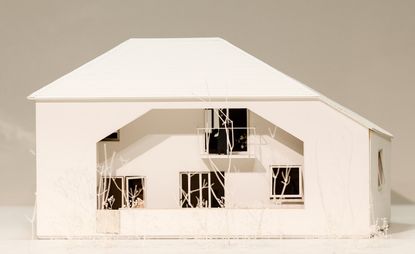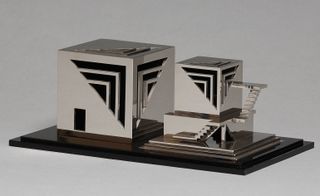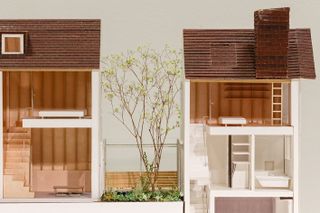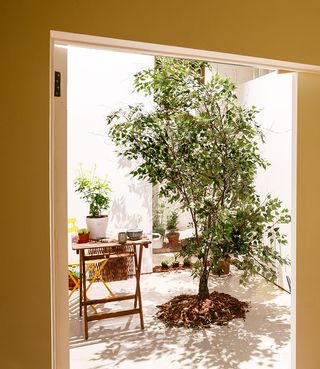House to home: a post-war history of Japanese domestic architecture arrives at Barbican

The Western fascination with Japanese domesticity reaches its apogee with the Barbican’s newest architecture exhibition. A sizeable chunk of this architectural obsession stems from jealousy at the sheer design diversity on display, seemingly unhindered by regulations and spurred on by a very different approach to real estate, longevity, heritage and regulations.
The exhibition goes substantially further by delving deeply into the post-war history of Japanese architectural design, tracing the origins of today’s extraordinarily rich and diverse scene in the social and political upheavals that followed the Second World War. Around 200 houses are included in the show, including early work by architects like Toyo Ito, Tadao Ando and Kenzo Tange as well contemporary works that range from sleekly designed spaces to hand-built and experimental projects.

Kiko Mozuna’s model of Anti-Dwelling Box, late 1970s.Image courtesy of the collection of Norihito Nakatani
The focal point is an installation of a full-scale domestic space, a recreation of Ryue Nishizawa’s Moriyama House. Built in Tokyo in 2005 (and familiar to any followers of the country’s contemporary architecture), the Moriyama House deconstructed the domestic zone and presented it as ten individual spaces arranged around a series of courtyard gardens.
The Barbican installation is an anthropological investigation into the life of Nishizawa’s client, Yasuo Moriyama, complete with books, furniture and other belongings, alongside a specially commissioned film on Moriyama’s life. The architect and historian Terunobu Fujimori has also contributed one of his celebrated teahouse installations to the show, while the gallery lighting has been dynamically adapted to reflect a changing day to night cycle every hour. Modernism, tradition and innovation come together under one roof.

The exhibition delves deeply into the post-war history of Japanese domestic architectural design

Toyo Ito's Silver Hut, 1984.

The exhibition includes early work by architects like Toyo Ito, Tadao Ando and Kenzo Tange, as well contemporary designs that range from sleekly designed spaces to hand-built and experimental projects

The focal point is an installation of a full-scale domestic space, a recreation of Ryue Nishizawa’s Moriyama House
INFORMATION
’The Japanese House: Architecture and Life after 1945’ is on view until 25 June. For more information, visit the Barbican website
ADDRESS
Barbican
Silk Street
London EC2Y 8DS
Wallpaper* Newsletter
Receive our daily digest of inspiration, escapism and design stories from around the world direct to your inbox
Jonathan Bell has written for Wallpaper* magazine since 1999, covering everything from architecture and transport design to books, tech and graphic design. He is now the magazine’s Transport and Technology Editor. Jonathan has written and edited 15 books, including Concept Car Design, 21st Century House, and The New Modern House. He is also the host of Wallpaper’s first podcast.
-
 Ikea introduces its first gaming furniture collection
Ikea introduces its first gaming furniture collectionBrännboll is the first Ikea gaming furniture collection, unveiled during Milan Design Week 2024 and designed to swiftly transform a domestic space into a gamer’s paradise
By Jasper Spires Published
-
 Morgan take their classic roadster and give it subtle but significant tweaks for 2024
Morgan take their classic roadster and give it subtle but significant tweaks for 2024New details and features give the compulsive Morgan Plus Four an even more pared back silhouette and driving ability
By Jonathan Bell Published
-
 Wallpaper* Class of '24 exhibition now open at Triennale Milano
Wallpaper* Class of '24 exhibition now open at Triennale MilanoWallpaper* Class of '24 exhibition at Triennale spotlights international emerging talent in furniture and product design, with the support of AHEC and SNOW (until 21 April 2024)
By Rosa Bertoli Published